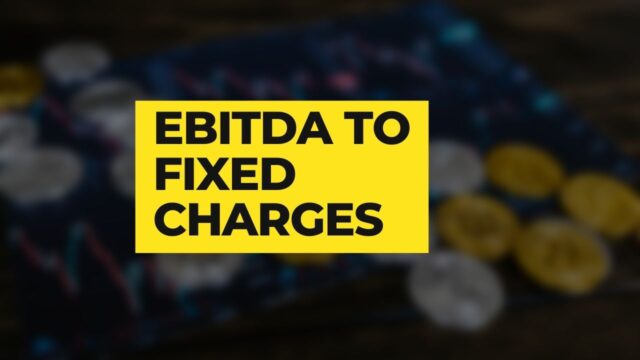
What is EBITDA and how is it calculated
EBITDA is an acronym that stands for Earnings Before Interest, Taxes, Depreciation, and Amortization. It is a measure of a company’s profitability that excludes these four expenses. The calculation is simple: you take a company’s net income and add back interest, taxes, depreciation, and amortization. This number gives you an accurate picture of the company’s operating cash flow. While EBITDA is not perfect, it is a helpful tool for investors to use when comparing companies in the same industry. It is also important to remember that EBITDA does not include all expenses, so it should not be used as the sole measure of a company’s profitability.
What are fixed charges and why are they important
Fixed charges are a type of financial charge that does not fluctuate with changes in the underlying variable. In other words, the amount of the charge will stay the same even if the variable it is associated with goes up or down. The most common type of fixed charge is an interest rate on a loan, which will remain constant over the life of the loan regardless of changes in the market interest rates. Other examples of fixed charges include insurance premiums and minimum monthly payments on credit cards.
Fixed charges are important because they provide predictability and stability in an otherwise uncertain world. For example, if you have a loan with a fixed interest rate, you will know exactly how much your monthly payments will be for the entire length of the loan. This can make it easier to budget and plan for your expenses. Similarly, insurance premiums and minimum monthly payments on credit cards can also help you to predict and plan for your expenditures. In general, fixed charges can help to make your financial life more manageable by providing some certainty in an otherwise unpredictable world.
How does the EBITDA to Fixed Charges ratio impact a company’s ability to repay debt
The EBITDA to Fixed Charges ratio is a key metric that creditors use to assess a company’s ability to repay its debts. This ratio measures the amount of earnings before interest, taxes, depreciation, and amortization that a company has available to make interest payments on its debt. A high ratio indicates that a company has plenty of earnings available to make its interest payments, while a low ratio means that the company may have difficulty meeting its debt obligations. Creditors will closely scrutinize a company’s EBITDA to Fixed Charges ratio when considering whether to extend credit. A high ratio is generally seen as a sign of financial health, while a low ratio may be indicative of financial distress. As such, the EBITDA to Fixed Charges ratio is an important factor in determining a company’s creditworthiness.
What are some potential implications of a high or low EBITDA to Fixed Charges ratio
A company’s EBITDA to Fixed Charges ratio is a key measure of its financial health. This ratio compares a company’s earnings before interest, taxes, depreciation, and amortization (EBITDA) to its fixed charges, which include interest payments on debt and lease payments. A high ratio indicates that a company has strong earnings power and is able to easily meet its financial obligations.
Conversely, a low ratio may indicate that a company’s earnings are insufficient to cover its fixed costs, which could put the company at risk of defaulting on its debt payments or being forced to make difficult cuts to its operations. While the EBITDA to Fixed Charges ratio is just one metric among many that investors use to assess a company’s financial health, it is an important one that can provide insights into a company’s ability to generate profits and service its debts.
How can a company improve its EBITDA to Fixed Charges ratio?
A company can improve this ratio by increasing earnings and/or decreasing fixed charges. One way to increase earnings is to focus on operational efficiency and cost control measures. For example, a company can streamline its production process, reduce waste, and negotiate better terms with suppliers. Another way to increase earnings is to grow revenue through new product development or market expansion. Additionally, a company can lower its fixed charges by refinancing debt at a lower interest rate or negotiating more favorable lease terms. Improving the EBITDA to Fixed Charges ratio is an important goal for any company as it will improve the bottom line and make the company more attractive to investors.


































